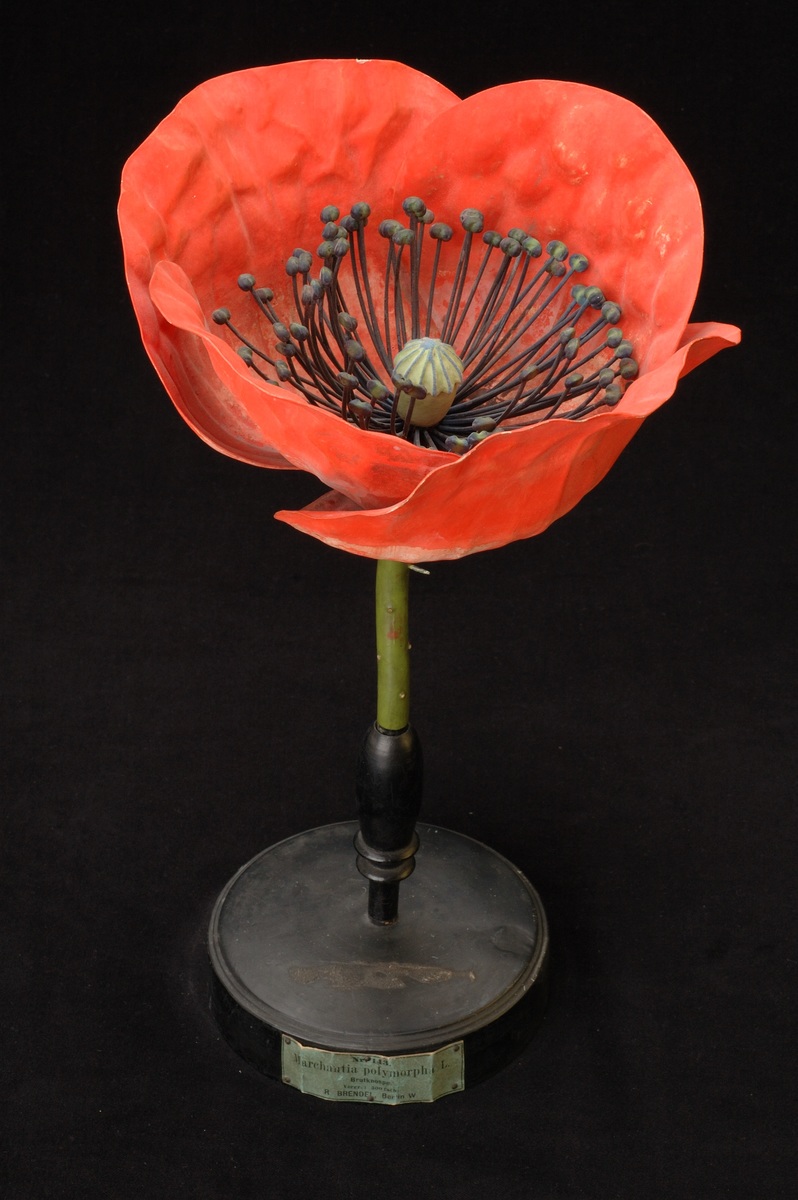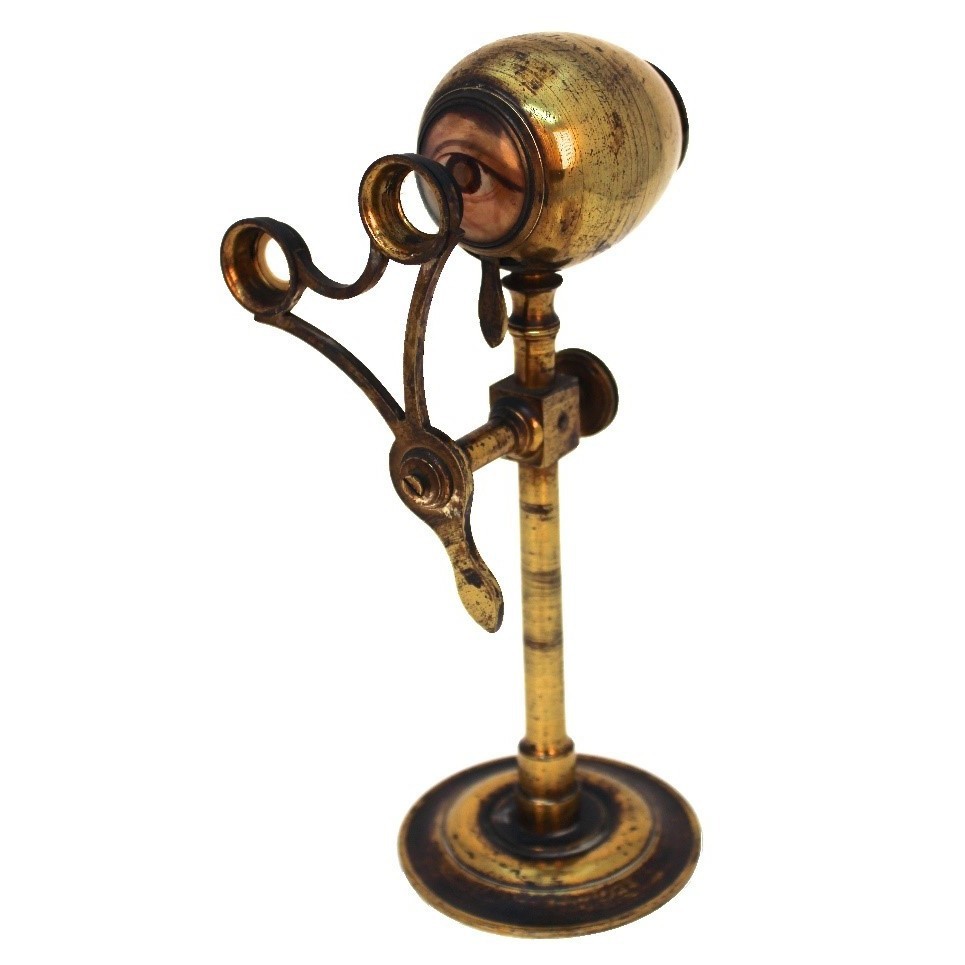Educational Models

Models have a long history in biological and medical teaching.
They are well suited to demonstrating small or ephemeral details, or things that are otherwise hard to preserve. Often the models are more than just educational tools: they are works of art in their own right. The making of such models was at its height during the late 19th and early 20th century. The University is fortunate in having many models from this period by some of the greatest exponents of the art.

Jellyfish Porpita Mediterranea
Leopold Blaschka (1820-1895) and Rudolf Blaschka (1857-1939) were a father and son partnership from Bohemia. They gained acclaim as glass workers through their accurate modelling of flowers and marine invertebrates. The Zoology Museum holds one of the most important collections of their work containing thirty four Blaschka glass models of marine invertebrates. The University also holds fluid preserved specimens of marine invertebrates from Hecknel, one of the scientists who inspired the Blaschkas. This glass model of jellyfish porpita was made by Leopold and Rudolf Blaschka.
Brendel Model of Corn Poppy
Robert Brendel (1821-1898) and his son Reinhold (1861-1927) produced careful models of enlarged flowers. They were designed to teach botanical morphology and classification based on plant structures. The models were made from papier mâché, with other materials such as wood, cotton, rattan, pulp cane, glass beads, feathers and gelatine. The University holds over 150 examples.
Model of the nerves in the brain of a fetus by Friedrich Ziegler
From around 1850 to 1920, first Adolf Ziegler and then his son, Friedrich, crafted wax models of developing embryos. These were used around the world for teaching embryology. The University holds 130 of the models covering the development of human and animal organs. In addition there are fifty other wax models of anatomy from unknown makers.
Model of a head by Bock Steger Lips
Ceramic model of a head showing right half of head and neck, only lower half of skull modelled; showing muscles around eye, cheek and neck.
ABDAN:2344
Modern Plastic Models
Plastic model of a heart.
ABDAN:1125
Six painted ceramic models of human organs made by the prominent model maker Bock Steger Lips in Leipzig in the late 19th century are also in the collection. The Anatomy Museum has a collection of around 300 plastic models of the human form. The majority of these models are contemporary plastic models made by Adam Rouilly.
Model of the Eye
The collection contains a diverse range of models which include everything from medical models such as the one shown to models of the weather. This is a model of the eye showing how glasses correct vision.
Giant dismantling model of snail by Louis Auzoux
Louis Auzoux (1797-1880), a French medical graduate, was the pre-eminent maker of plaster and papier mâché anatomical and zoological models during the 19th century. He developed anatomically accurate models of body structures that could be taken apart and reassembled by the student. The University holds around 42 Auzoux objects, mainly in the Anatomy collection, but also in the Pathology and Zoology collections.

![[Untitled] [Untitled]](https://exhibitions.abdn.ac.uk/university-collections/files/fullsize/1ddaee7551db72b4f7a3aaca891ad9ff.jpg)

![[Untitled] [Untitled]](https://exhibitions.abdn.ac.uk/university-collections/files/fullsize/569aed91ea1f0a0f1acf1310d63825b1.jpg)
![[Untitled] [Untitled]](https://exhibitions.abdn.ac.uk/university-collections/files/fullsize/48802e9571f817aeddf31040f8ae8a71.jpg)
![[Untitled] [Untitled]](https://exhibitions.abdn.ac.uk/university-collections/files/fullsize/12761bbb9d03bddc64af85a917771543.jpg)

![[Untitled] [Untitled]](https://exhibitions.abdn.ac.uk/university-collections/files/fullsize/085b9ad55129ab906afd7772c707ebf8.jpg)